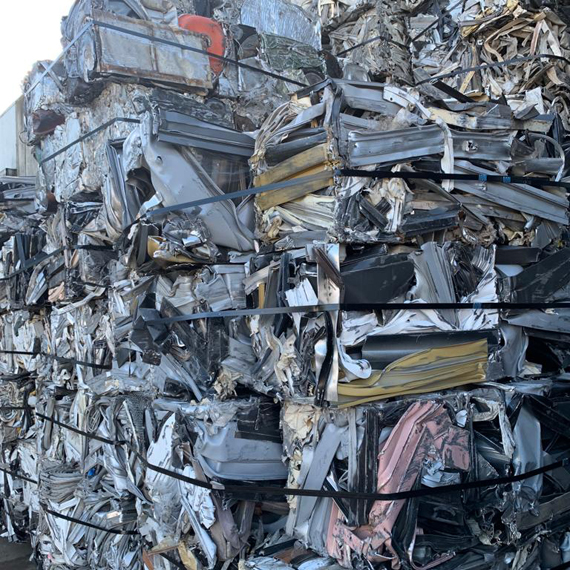Metal recycling is a crucial process that helps protect the environment, saves energy, and reduces waste. In Australia, more and more people and businesses are taking part in metal recycling to support sustainability and conserve valuable resources. The journey of metal from collection to reuse involves several important steps. Each stage ensures that old and discarded metal gets a new life, rather than ending up in landfill. Understanding this process helps everyone appreciate the effort behind recycling and encourages more responsible choices.
Collection
The first step in metal recycling is collection. Metal can come from many places, including homes, factories, construction sites, and old vehicles. People often bring their scrap metal to recycling centres or scrap yards, where it is gathered together for processing. Some recycling services also offer pick up options for larger amounts of metal. Collection is important because it brings together all the metal that would otherwise be thrown away, making sure it is available for recycling instead of ending up as waste.
Sorting
Once the metal is collected, it needs to be sorted. Sorting means separating different types of metal from each other. For example, steel and iron are magnetic, while metals like aluminium, copper, and brass are not. Recycling centres use magnets and special machines to help with this process. Sorting is important because each type of metal needs to be processed in a different way. Good sorting also helps to remove any materials that cannot be recycled, such as plastic or wood, which could affect the quality of the final product.
Processing and Shredding
After sorting, the metal is ready for processing. This usually starts with cleaning the metal to remove dirt, paint, or oil. Clean metal is easier to recycle and results in a better quality product. Next, the metal is crushed and shredded into smaller pieces. Shredding helps to break down large items, like cars or appliances, into manageable pieces. Smaller pieces of metal have more surface area, which makes them easier to melt and recycle. Shredding also helps to remove any leftover non metal materials, ensuring the metal is as pure as possible.
Melting and Purification
The next step is melting the shredded metal. Each type of metal is melted in a special furnace at a high temperature. For example, aluminium melts at a lower temperature than steel. As the metal melts, any impurities rise to the surface and can be removed. This process is called purification. Purification is important because it ensures the recycled metal is clean and ready to be made into new products. Melting and purifying metal uses less energy than making new metal from raw materials, which is one of the main benefits of recycling.
Casting and Forming
Once the metal is melted and purified, it is ready to be shaped into new forms. The molten metal is poured into moulds to make ingots, blocks, or sheets. These new shapes can then be sent to manufacturers who use them to make all kinds of products, from cars and appliances to building materials. Casting and forming is the final step in the recycling process before the metal is reused in new products.
Reuse
After casting and forming, the recycled metal is ready to be used again. Manufacturers take the recycled metal and turn it into new items, such as metal cans, car parts, or construction materials. By using recycled metal, manufacturers save energy and resources, and help reduce the need for mining new metal. This is good for the environment and supports a circular economy, where materials are used and reused as much as possible.
The Benefits of Metal Recycling
Metal recycling has many benefits. It saves energy, reduces pollution, and conserves natural resources. Recycling also helps to create jobs and supports local economies. By understanding the process of metal recycling, from collection to reuse, people can see how important it is to recycle metal and help protect the environment for future generations.
One of the biggest advantages is the amount of energy saved compared to making new metal from raw materials. For example, recycling aluminium uses up to 95 per cent less energy than producing it from bauxite ore. This means fewer greenhouse gases are released into the air, which helps to slow down climate change and improve air quality. Recycling steel, copper, and other metals also uses much less energy and produces less pollution.
Another important benefit is the conservation of natural resources. Metals like iron, copper, and aluminium are limited in supply. By recycling metal, we reduce the need for mining, which can damage the land, harm wildlife, and use a lot of water. Recycling keeps these valuable materials in use, so they do not go to waste.
Metal recycling also creates jobs in collection, sorting, processing, and manufacturing. It supports local businesses and helps communities grow. When more people recycle, there is less rubbish in landfill, and councils can save money on waste management. Altogether, metal recycling is a simple way for everyone to make a positive difference for the environment and the economy.
Conclusion
The journey of metal recycling is not just about saving resources; it is about making ethical choices for our planet’s future. In Australia, companies like Resteel Recycling lead the way with a strong commitment to responsible and transparent recycling. Their focus on ethical practices and genuine care for the environment ensures that every piece of scrap metal is handled with integrity and purpose. By choosing Resteel Recycling, you support a business that puts sustainability and community first, making it easier for everyone to contribute to a cleaner, greener Australia.



